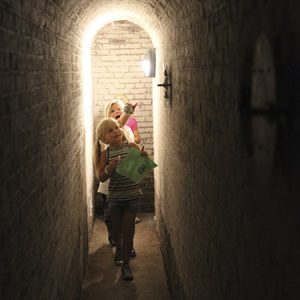This week, the British Museum announced that it would return eight looted artifacts of antiquity to Iraq’s National Museum. These objects, including a 4,000 year old clay-fired cone inscribed in cuneiform, were illegally taken from the country following the US-led Iraq invasion in 2003. While thousands of priceless objects of Mesopotamian cultural heritage remain missing, the return of these eight signal a positive “win” for cultural materials often subject to global discussions concerning repatriation and restitution.
The debate is complicated, involving questionable permits, unethical archaeological practices, colonial coercion tactics, nation-state laws, and of course, money. Is there ever truly an owner when it comes to great art and if so, who would it be? The one who created it, the one who bought it, the one who found it, or the one who restored it? These imperative questions are just some of many involving issues of repatriation and restitution of cultural materials in museums around the world. From the Bust of Queen Nefertiti (originally from Egypt but currently on display in Berlin) to the thousands of artworks looted under the Third Reich, the controversies surrounding these cultural materials are complex, emotional, and anything but straightforward.
The Elgin Marbles often receive the most public attention in repatriation conversations, probably because museums fear the Marbles’ return to Athens could set the stage for countless other cultural objects to be repatriated too. With an impressive archaeological museum right down the hill from the Acropolis, as well as the equipment, teams, space, and funding available to properly care for and display the Parthenon sculptures, I am in favor of their repatriation. However, many fear that returning a culture’s heritage back to its country of origin possibly means putting the objects at risk of iconoclasm or destruction.
For instance, the Antalya Museum in Turkey has been attempting unsuccessfully to ensure the return of the Sion Treasure, a precious set of silver and gold liturgical objects from Byzantium, currently on display at Dumbarton Oaks in Washington, D.C. The Turkish government has argued the patens, crosses, and candlesticks in the collection are their rightful property, and that they should be returned. Similar to the Elgin Marbles, their legal acquisition into an American museum provokes further scrutiny. The silver was first discovered buried on a hillside in Kumluca, in southwestern Turkey, where it may have been hidden for protection in response to Arab raids. Due to unauthorized excavations and black market traders, the objects eventually found their way onto American ground illegally.
Despite this, many art historians and museum professionals argue the Sion Treasure should stay in D.C. Dumbarton Oaks spent thousands of dollars restoring the flattened and shattered pieces of the set, the condition in which they arrived at the Museum. There it was lovingly restored to its original brilliance and luster, safeguarded and protected, and displayed for the thousands of tourists who have visited this museum each year.
Should cultural objects reside in a place that is most accessible to the public? The past belongs to all of humanity; is it our right to be able to see and enjoy art objects in the place that is most safe? (Antalya is close to Syria, where a significant amount of art objects have already been lost due to deliberate demolition.) As the cultural theorist Kwame Anthony Appiah has stated, the “rule should be one that protects the object and makes it available to people who will benefit from experiencing it.”[1] When it comes to displaying antiquities with a contentious provenance, does it come down to the “greater good?”
What are your thoughts?
[1] Kwame Anthony Appiah, “Whose Culture is it?,” 4, (https://www.nybooks.com/articles/2006/02/09/whose-culture-is-it/).

